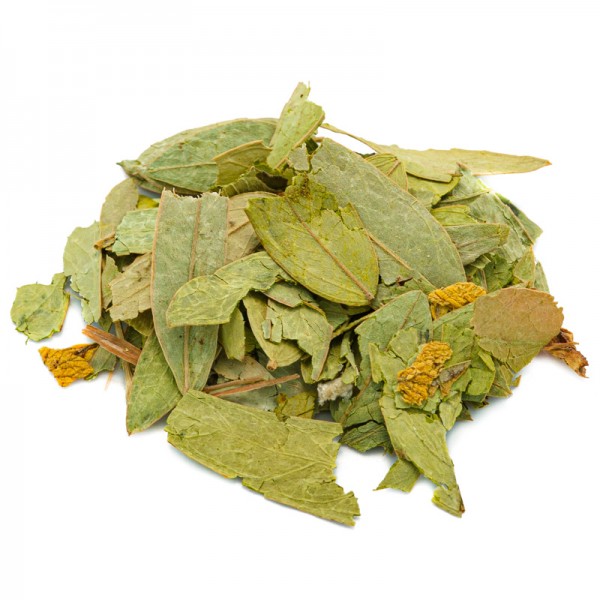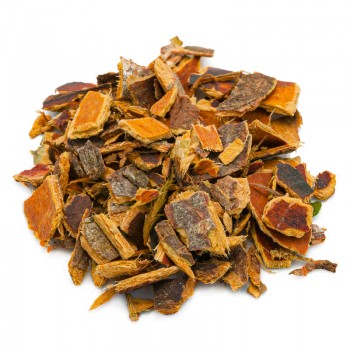This plant has laxative properties, which can be useful to us through the infusion of leaves.
The laxative and purgative property of senna is useful in case of constipation and hemorrhoids. But the characteristics of senna do not end there, in fact the plant also helps the overall well-being of the gastrointestinal system.
Senna: properties and benefits
Known as a laxative, senna has historically also been used to kill worms, and to purify the body.
This herbal tea has properties thanks to the substances contained in the senna leaves, which interact with bacteria in the digestive tract.
These are substances called dimeric glycosides , derivatives of anthraquinone, known as senna glycosides or sennosides. They act with a slight irritation, which causes the intestinal muscles to contract and gives the laxative effect. Both the pods and the leaves of the senna are used for their laxative effects via these substances, but the leaves are more potent.
Glycosides are a group of organic compounds commonly found in plants that work to move muscles as digested food moves through the intestines.
The contraction helps to increase the volume of stool and move it out of the colon, creating the purgative effect.
The whole process is caused by the chain of fatty acids that help digestion and fermentation, until the glycosides are converted into a laxative agent.
For this reason, Senna leaf tea is generally used by people suffering from constipation . Bowel movement should occur within 6-12 hours.
It is recommended to take before bed, so that relief against constipation can occur in the morning.
It is important not to use senna for more than a week, otherwise the leaves of the plant can irritate the intestinal walls.
Obviously, prolonged use can cause inflammation of the intestinal tract, episodes of diarrhea or vomiting.
Its beneficial properties also serve to counteract abdominal bloating and flatulence.
The purgative properties of senna leaves can be effective in treating digestive system disorders, including indigestion. They promote gastric emptying of the stomach and calm the intestinal tract, reducing acid in the stomach.
The herbal tea can also be useful to treat hemorrhoids or inflammation of the veins surrounding the part, due to excessive pressure. By reducing inflammation, it can promote relief, and easier final transit.
Origins and History of cultivation
The Senna plant (S. alexandrina) is native to North Africa, and is found today in many tropical countries, especially it is grown on a large scale in China, India and Somalia.
It is an ornamental plant that since ancient times was used in herbal medicine by the Egyptian populations. It was, in fact, very widespread in Upper Egypt, in the Nubian region near Sudan.
Its function as a laxative was well known, and senna was also used as a purgative to eliminate intestinal worms. Pods or senna leaf tea were used to stimulate the intestine, and decrease the absorption of water from inside the colon, to counteract constipation.
The leaves and parts of senna are traded particularly in the Egyptian territory along the Nile river up to Cairo, and to the ports of the Red Sea. For the Ababda nomads, for example, the seine trade is a significant source of income.
Plant and flowers
Senna alexandrina is an ornamental plant of the genus Senna, belonging to the Leguminosae or Fabaceae family. This very diversified genus is native to the tropics, as well as a limited number of species in temperate regions.
The Senna is a shrub that reaches about 1 meter in height, with a light green stem, scattered branches on which 4-5 pairs of leaves sprout. These leaves form complex pairs, with pairs of fringed leaflets, with a pointed tip.
The large flowers are yellow - brown, while the fruits are legumes.
If the plant is grown, it is cut every 6 months, dried in the sun, and the parts useful for the sale are packaged in palm leaf bags.
Nutritional values of Senna
Inside the senna leaves, there are tannin, essential oil, resin , and a compound of ethanol and acetone beneficial for skin health . Furthermore, we find flavonoids and sugars in the leaves.
The active anthraquinone principles are, however, those that characterize senna in its laxative properties. They are called sennosides A and B, and are diantronic glycosides, contained in the leaves and fruits.
How to use Senna leaves in herbal tea
The infusion of Senna, is obtained by inserting in a cup (250 ml), about 3-5 grams of leaves in herbal tea cut with water at 100 ° C.
Leave to infuse for 5 to 8 minutes, before drinking the laxative herbal tea.
Add honey or sugar if you wish.
Senna: side effects and contraindications
This plant in the form of leaves in herbal tea may not be suitable for everyone. First of all, senna should not be used beyond 1 week, to avoid diarrhea, vomiting or intestinal inflammation.
Furthermore, it should not be consumed during pregnancy or breastfeeding. It cannot be given to children.
Senna with laxative effect is harmful for those suffering from Crohn's disease, ulcerative colitis, liver, kidney or heart disease. It should also be avoided for those with intestinal obstruction, or appendicitis.
Finally, possible side effects of intestinal pains, which can reveal themselves together with diarrhea, within 24 hours of taking the herbal tea should be reported.











 No reward points for this product.
No reward points for this product.


